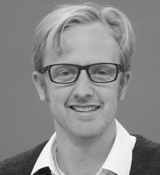By: Rob Hoehn
The Food and Drug Administration in the US has a lot of responsibility to protect and advocate for consumers. And one department in the FDA, the Center for Drug Evaluation and Research (CDER), regulates over-the-counter and prescription drugs, including biological therapeutics and generic drugs.
So it doesn’t come as any surprise that there are team members in this organization that are charged with solving problems and working on efficiency – an internal sort of consultancy to the organization to make sure that the whole system functions with excellence.
For several years now, one of the tactics that the FDA has utilized for continuous improvement is crowdsourcing. They ask their employees for input on solving problems and it’s helped them to become more sustainable, improve professional development, and increase efficiencies. But in recent years, they’ve adopted a new model for problem solving – one that coaches business leaders on how to put together a good crowdsourcing campaign so that anyone can identify and solve a problem with the help of the crowd, but there are a few things that the team focuses on in order to help make a campaign successful:
Start with an effective problem statement. Make it concrete and start with the end in mind. How do the decision makers know a good idea when they see one? How will they be measuring quality? The team at FDA helps business leaders articulate all of these things into a short, but comprehensive problem statement to engage the crowd. Not only does this help for communications, but it also helps to make sure that the ideas generated will be applicable (and therefore implemented).
Ideation needs to end at some point. Most of the FDA challenges only allow for ideation in two-week sprints. One of the reasons that this happens is because it helps to scope the amount of work that it takes to run a challenge, but another reason that it’s useful is because introducing a deadline creates a sense of urgency with the crowd. And, of course, once ideation has ended, concept building, selection and implementation needs to happen.
Separate ideation and prioritization. These two activities are often linked in IdeaSacle communities, but this process from the FDA seems both unique and effective. Essentially, brainstorming happens separate from voting with a round of expert vetting in between. Ideas that aren’t ready are put in a parking lot, ideas that need more work go back to the drawing board and ideas that have some legs are put back out to the crowd for prioritization so you know that the work to be done will be the most impactful. Not only does this make the process more efficient, it gives the crowd a reason to come back, re-engage, and help in the decision-making process.
What are you looking for? Incentivize for that. Because the FDA is a government organization, they had to get creative with the incentives that they could offer. Instead of monetary or gift-based prizes, they offered workplace incentives, like having coffee with leadership, a parking space for a week, or the ability to go home early. But they tailored those prizes to their goal. For example, if they were prioritizing participation, they set group goals (if 80% of the community participates, then everyone can go home one hour early on Friday) vs. idea quality (if an idea is selected, the idea author gets to have coffee with leadership). This can apply to any crowdsourcing programs where the incentives need to align with the goals.
With these best practices, the FDA has launched nearly 30 crowdsourcing challenges in five years. The reason they are able to repeatedly launch and manage that many challenges is because they are investing in training their decision makers so that they know that they’ll be able to deliver on these ideas in the end. Listen to the full story in the podcast episode here.
About the author
 Rob Hoehn is the co-founder and CEO of IdeaScale: the largest open innovation software platform in the world. Hoehn launched crowdsourcing software as part of the open government initiative and IdeaScale’s robust portfolio now includes many other industry notables, such as EA Sports, NBC, NASA, Xerox and many others. Prior to IdeaScale, Hoehn was Vice President of Client Services at Survey Analytics.
Rob Hoehn is the co-founder and CEO of IdeaScale: the largest open innovation software platform in the world. Hoehn launched crowdsourcing software as part of the open government initiative and IdeaScale’s robust portfolio now includes many other industry notables, such as EA Sports, NBC, NASA, Xerox and many others. Prior to IdeaScale, Hoehn was Vice President of Client Services at Survey Analytics.
Featured image via Unsplash.

